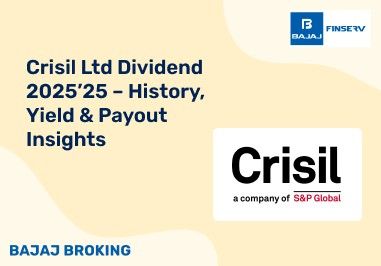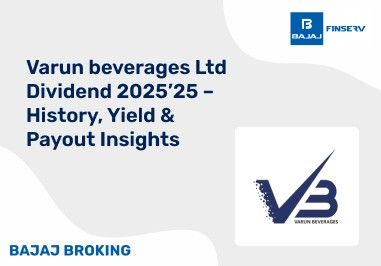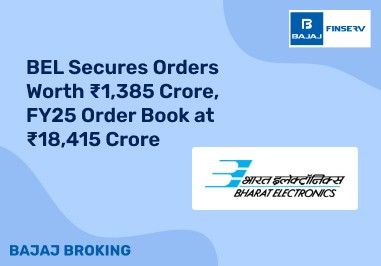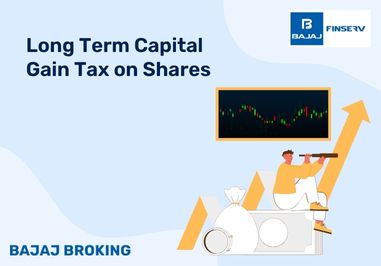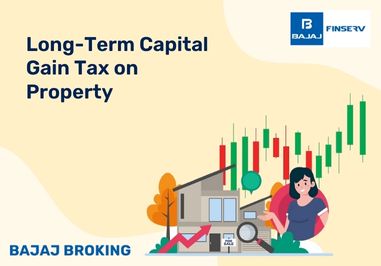BAJAJ BROKING
Retaggio Industries IPO is Open!
Open a Free Demat Account
Trade Now, Pay Later with up to 4x
Track Market Movers Instantly
Sharpe Ratio - Meaning, Formula & How to Calculate?
Synopsis:
Sharpe Ratio is a useful indicator, which explains how much extra return an investor can earn on his investment for each additional unit of risk he takes.
It is a well-known fact that reward and risk go hand in hand. In other words, the higher the risk, the higher the reward, and the lower the risk, the lower the reward.
Economist William Sharpe quantified this relationship between risk and reward and proposed a formula to tell investors how much extra return they can generate on their investment with each additional unit of risk they take. This formula is known as the ‘Sharpe Ratio’.
If you have just opened a trading account, do read this blog because it will discuss the meaning of Sharpe ratio and how to calculate and interpret it.
How to calculate Sharpe Ratio – Sharpe Ratio formula
Sharpe ratio is calculated by using the following formula:
Sharpe ratio = [(Return on a portfolio – Risk free rate)]/[Standard deviation of (Return on a portfolio – Risk free rate)]
Let us discuss the numerator first. The first term, return on a portfolio, stands for a portfolio’s return. Then, we come to the second term, risk-free rate. This means the return an investor will earn without taking any risk. As a practice, we take the return on a 90-day treasury bill as the risk-free rate. The difference between the return on a portfolio and the risk-free rate is the extra return that can be made by investing in that portfolio.
Now, let us discuss the denominator. The denominator shows the risk an investor takes by investing in a portfolio. Sharpe ratio measures the risk by using standard deviation of the excess return of a portfolio over the risk-free rate.
Additional Read: What is the Treynor Ratio?
How to interpret the Sharpe ratio?
As we discussed, the numerator of the Sharpe ratio stands for extra returns that can be generated over the risk-free rate by investing in a portfolio. And, the denominator stands for the risk of investing in that portfolio.
If both the reward and risk of an investment are equal, Sharpe ratio will equal 1. A Sharpe ratio of 1 is the least you should expect from an investment. Suppose you want to invest in a mutual fund, but you realise that its Sharpe ratio is less than 1, should you invest in it?
A value of less than 1 means that the extra return of investing in this mutual fund is less than the risk of investing in it. In other words, the risk is more than the reward of investing in this mutual fund. Needless to say, you should not invest in such a mutual fund.
Now, suppose there is a mutual fund with a Sharpe ratio higher than 1, should you invest in it? A value higher than 1 indicates that the extra return of investing in this fund is more than the risk of making this investment. Therefore, you should invest in it.
Let us take a more complex example. Suppose you have two mutual funds to choose from: Fund A and Fund B. Fund A’s Sharpe ratio is 1.3, while Fund B’s Sharpe ratio is 1.6. You can invest only in one of these funds. How should you take this decision?
As Fund B has a higher Sharpe ratio than Fund A, it means that Fund B compensates you better for every additional unit of risk you take than Fund A. Hence, you should invest in Fund B.
Can Sharpe ratio be negative? Yes, it can be negative. If a portfolio’s return is lesser than the risk-free rate, its Sharpe ratio will be negative. You should never invest in such a portfolio because it is not even able to generate the risk-free rate. Rather than investing in it, you can invest in treasury bills, which are risk-free.
Additional Read: What Does a Financial Instrument Mean?
Conclusion
Sharpe ratio can be a useful indicator when making an investment. Whether you are investing in small cap mutual funds or large cap mutual funds, Sharpe ratio can help you make a decision.
However, Sharpe ratio has certain inherent limitations. For example, it calculates risk using standard deviation, which uses a normal distribution to calculate volatility. In reality, stock markets often go to extremes, as they are driven by emotions. Sharpe ratio may not be able to capture such extremes. So, you should not make a decision based entirely on Sharpe ratio. Consider a few other indicators as well to make a more judicious decision.
Additional Read: Difference Between SML and CML?
Disclaimer: Investments in the securities market are subject to market risk, read all related documents carefully before investing.
This content is for educational purposes only. Securities quoted are exemplary and not recommendatory.
For All Disclaimers Click Here: https://bit.ly/3Tcsfuc
Share this article:
Read More Blogs
Our Secure Trading Platforms
Level up your stock market experience: Download the Bajaj Broking App for effortless investing and trading


